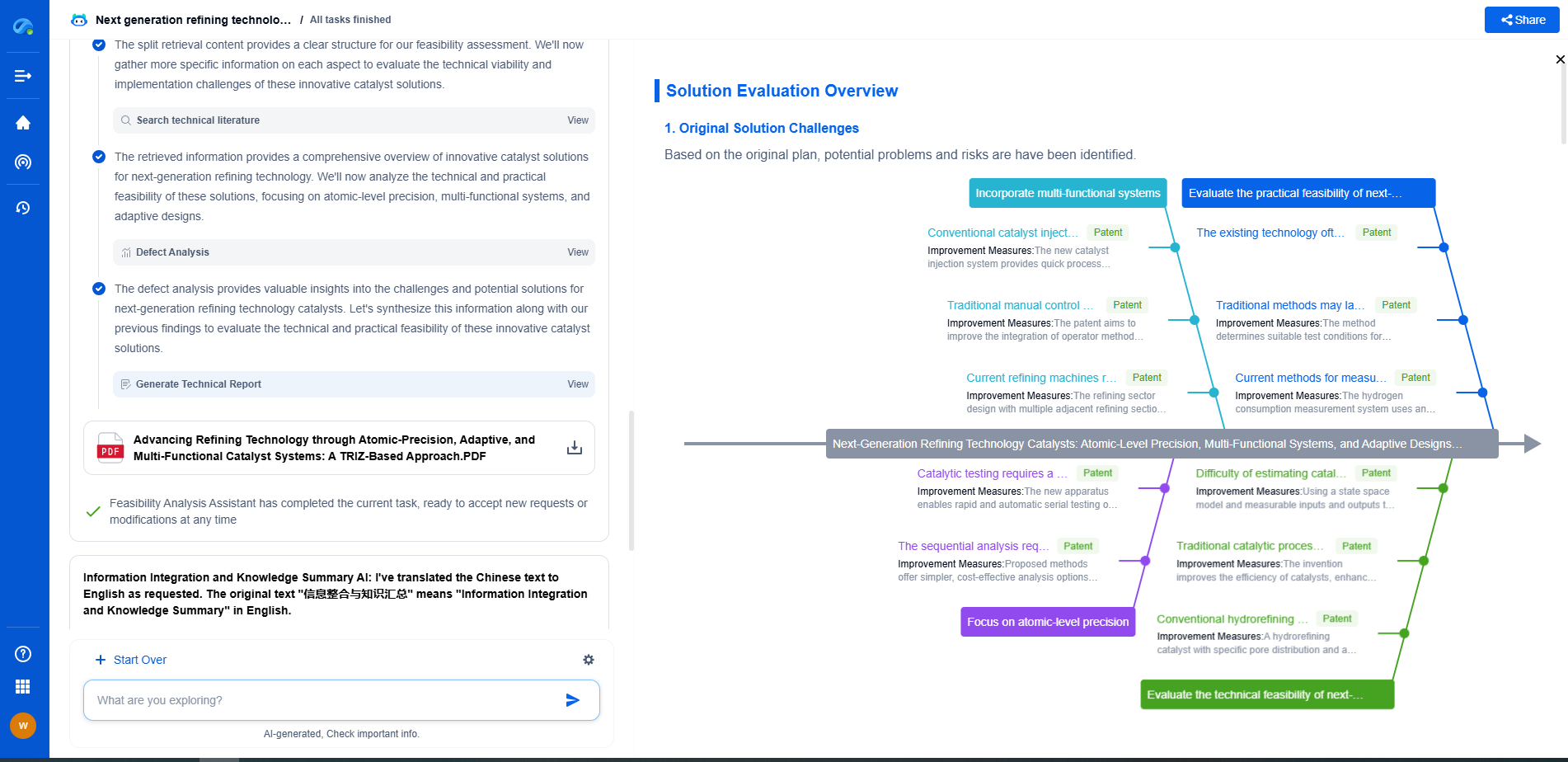PID vs. Model Predictive Control (MPC): Which is Better for High-Speed Robots?
JUN 26, 2025 |
When it comes to controlling high-speed robots, the choice of control strategy can significantly impact performance, efficiency, and accuracy. Two popular control methodologies are PID (Proportional-Integral-Derivative) control and Model Predictive Control (MPC). Each has its own strengths and weaknesses, making them suitable for different applications. In this discussion, we will explore the fundamental differences between PID and MPC, assess their suitability for high-speed robotic applications, and identify which might be better suited to specific scenarios.
Understanding PID Control
PID control has been the industry standard for decades due to its simplicity and effectiveness in many applications. A PID controller uses a combination of proportional, integral, and derivative actions to maintain control over a system.
1. Proportional Control: This component reacts to the current error, driving the system towards a setpoint. The proportional gain determines the system's sensitivity to error.
2. Integral Control: This addresses accumulated past errors, ensuring steady-state errors are minimized. It adjusts the control action based on the historical cumulative error over time.
3. Derivative Control: This anticipates future errors by considering the rate of error change. It helps in dampening system oscillations, providing smoother control.
Pros of PID for High-Speed Robots
PID controllers are favored for their ease of implementation and tuning, making them ideal for applications where simplicity and speed are paramount. They require minimal computational resources, allowing them to be deployed on less powerful hardware, which is often a requirement for high-speed robots. The straightforward nature of PID control also allows for quick response times, essential for handling the rapid dynamics of high-speed systems.
However, PID control can struggle with complex, multi-variable systems, especially those with significant delays or non-linear dynamics. These challenges can lead to suboptimal performance and necessitate frequent retuning to adapt to changing conditions.
Model Predictive Control Explained
Model Predictive Control (MPC) is a more advanced strategy that uses a model of the system to predict future behavior. By solving an optimization problem at each control step, MPC determines the optimal control actions over a future time horizon.
1. Predictive Model: MPC relies on an accurate model of the system to predict future states. The model takes into account both the current state and control inputs.
2. Optimization: MPC formulates a cost function based on desired outcomes, such as minimizing error or energy consumption. It optimizes control actions to achieve these outcomes while respecting system constraints.
3. Receding Horizon: MPC operates in a receding horizon manner, constantly updating predictions and optimizing control actions based on real-time feedback.
Advantages of MPC for High-Speed Robots
MPC offers several advantages for high-speed robotic applications. Its ability to anticipate future events and incorporate multi-variable interactions allows for more precise and efficient control. MPC is particularly effective in systems with constraints, such as maintaining safe operating conditions or adhering to performance limits.
The trade-off is that MPC requires significant computational resources and accurate system models, which can be challenging to develop for fast-moving robots. The real-time solution of optimization problems demands powerful hardware, potentially increasing system cost and complexity.
Comparative Analysis: PID vs. MPC
When comparing PID and MPC for high-speed robots, several factors should be considered:
1. Complexity and Implementation: PID is easier to implement and tune, while MPC requires in-depth system modeling and computational resources.
2. Performance: MPC generally offers superior control in complex, multi-variable systems with constraints, whereas PID excels in simpler, linear systems.
3. Adaptability: MPC can adapt to changing conditions more effectively due to its predictive nature, while PID may require frequent retuning.
4. Cost: The computational demands of MPC might increase costs, whereas PID can be implemented cost-effectively on simpler hardware.
Conclusion: Choosing the Right Control Strategy
The choice between PID and MPC hinges on the specific requirements and constraints of the high-speed robotic application. For systems that prioritize simplicity, quick deployment, and cost-effectiveness, PID remains a strong contender. However, for applications that demand high precision, adaptability, and operate within constrained environments, MPC may offer significant advantages despite its complexity and cost implications. Ultimately, the decision should be guided by a thorough analysis of system dynamics, performance requirements, and resource availability.
Ready to Redefine Your Robotics R&D Workflow?
Whether you're designing next-generation robotic arms, optimizing manipulator kinematics, or mining patent data for innovation insights, Patsnap Eureka, our cutting-edge AI assistant, is built for R&D and IP professionals in high-tech industries, is built to accelerate every step of your journey.
No more getting buried in thousands of documents or wasting time on repetitive technical analysis. Our AI Agent helps R&D and IP teams in high-tech enterprises save hundreds of hours, reduce risk of oversight, and move from concept to prototype faster than ever before.
👉 Experience how AI can revolutionize your robotics innovation cycle. Explore Patsnap Eureka today and see the difference.
- R&D
- Intellectual Property
- Life Sciences
- Materials
- Tech Scout
- Unparalleled Data Quality
- Higher Quality Content
- 60% Fewer Hallucinations
Browse by: Latest US Patents, China's latest patents, Technical Efficacy Thesaurus, Application Domain, Technology Topic, Popular Technical Reports.
© 2025 PatSnap. All rights reserved.Legal|Privacy policy|Modern Slavery Act Transparency Statement|Sitemap|About US| Contact US: help@patsnap.com

